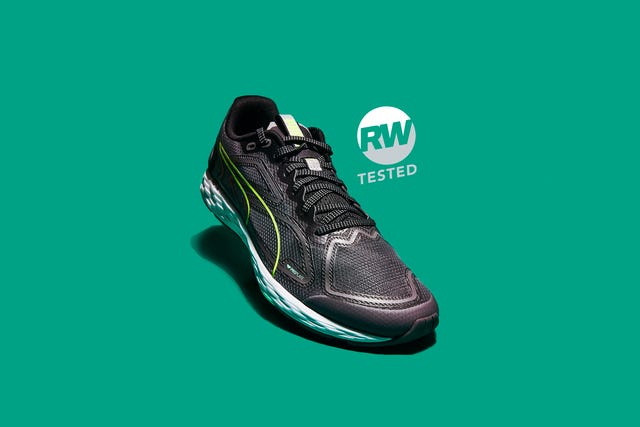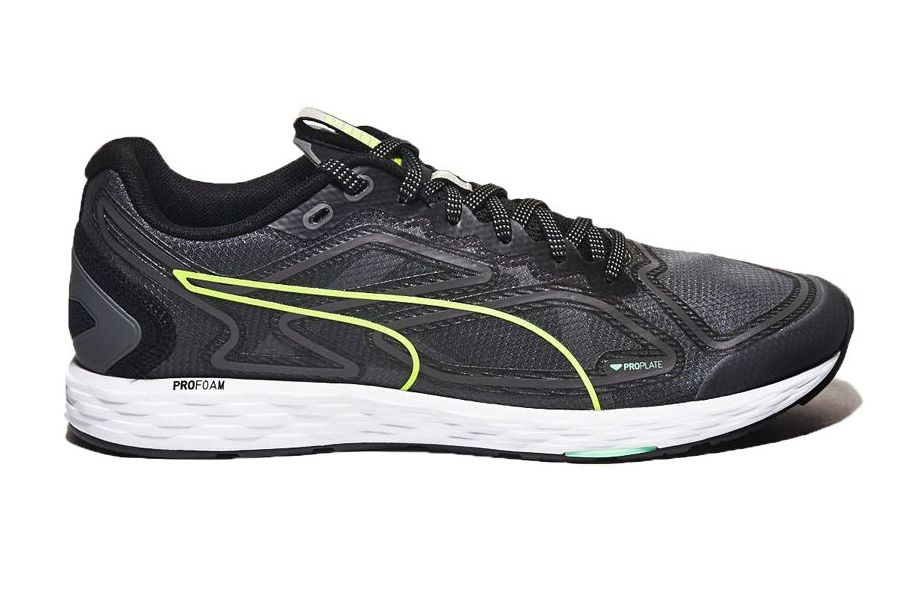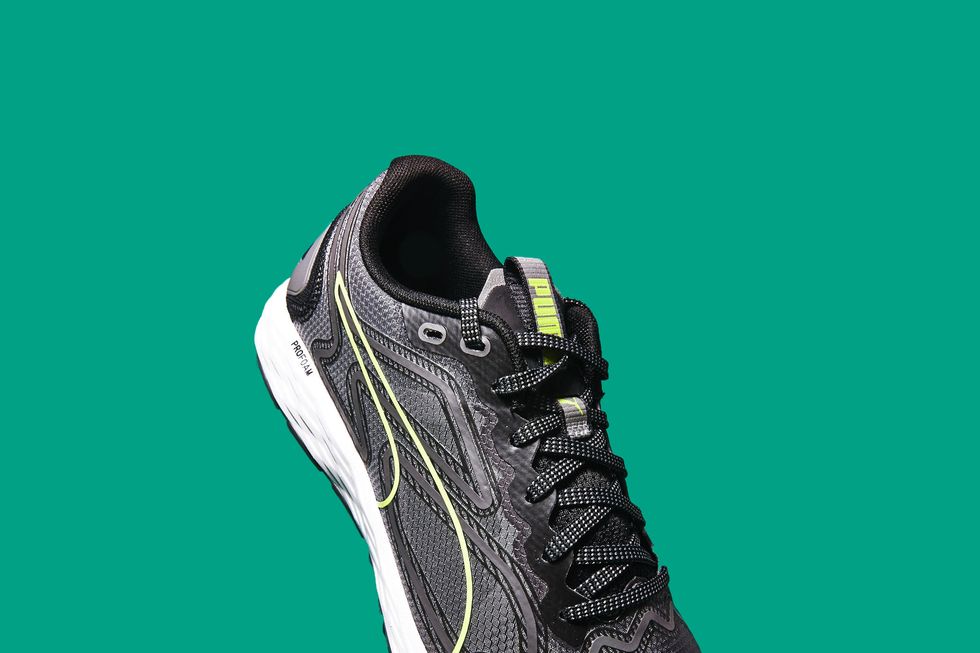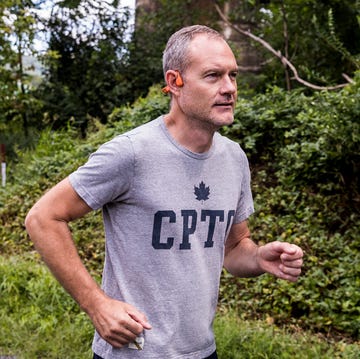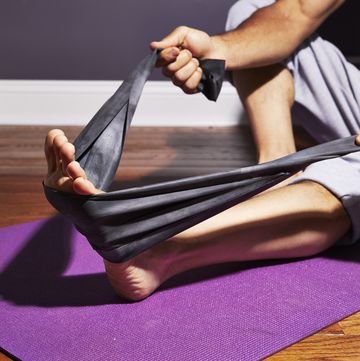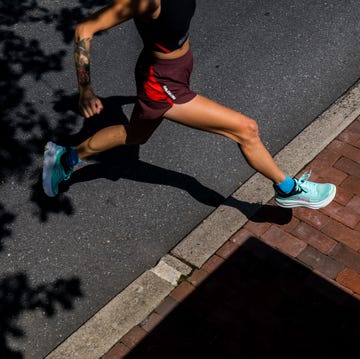The RW Takeaway: Experience a lightweight, energetic ride in Puma’s Speed 300 Racer 2.
- Propulsion plate in the midsole provides rebound
- Lightweight, semi-translucent upper
- Very little cushioning
Price: $110
Type: Road
Drop: 14mm (M), 15mm (W)
Weight: 8.9 oz (M), 7.1 oz (W)
Buy Men’s Buy Women’s More Images
Everything about Puma’s Speed 300 Racer 2 caters to speed demons, from the ProPlate in the midsole to the semi-translucent, lightweight upper. The ProPlate, a plastic V-shaped plate, is the primary component that adds propulsion to your run. The ProFoam midsole promotes rebound yet offers minimal cushioning to absorb impact.
The shoe is for a specific class of runners not prone to injury, with adept footwork in the later stretch of long runs as the shoe offers little support in terms of stability. If late onset overpronation hinders your stride, I’d advise you to watch your footing late in the game in the Speed 300 2. The ProFoam offers just enough padding for protection, but runners with sensitive joints, as well as Clydesdales, may find the shoe too barebones as an everyday or marathon trainer.
But there are outliers. One tester said the shoe would be best for short distance running because of its lack of cushioning. “Despite this,” she said, “I was still able to wear them for 10-plus-mile runs without a problem.”
High Energy Return
First impressions of the Speed 300 led me to make comparisons with Nike’s Zoom Fly 3, if only because the shoe’s semi-translucent upper reminds me of the similarly translucent Zoom Fly’s. Interestingly, our shoe lab shows the Speed 300 Racer 2 delivers higher energy return than Nike’s shoe in both the forefoot and heel, in spite of the carbon-fiber plate encased in the Zoom Fly’s midsole.
What the Puma shoe lacks, however, is snap. The RW Shoe Lab results show high flexibility with very little cushioning, especially in the forefoot. I wouldn’t wear this shoe for a marathon, but I would consider it for track workouts.
“This shoe definitely would be better for shorter runs and speedwork,” said a tester who has run in the similar Brooks Hyperion and the plusher and stiffer Karhu Ikoni Ortix. “There was little cushioning and it felt like it had a pretty firm base.”
Concerning Stability
Besides adding propulsion, the ProPlate also serves as a midfoot stabilizer to provide “torsional rigidity,” according to Puma. Testers didn’t find a problem with stability, at least in terms of fit. There was no mention of foot sliding, and the tongue and heel collar made the shoe fit comfortability snug.
I did notice on my runs some ankle rolling when the surface became uneven or I couldn’t avoid potholes on the road. Traction was also adequate, but I felt less confident on wet surfaces, as did our testers.
“I didn’t have any issues with traction, but I certainly would not describe them as grippy,” said one. “I would not recommend them for wet pavement or gravel surfaces as I think they would slip often.”
More Tester Feedback
Danielle Zickl, RW Health and Fitness Editor
Arch: Medium | Gait: Normal | Footstrike: Midfoot
“I tested this shoe mostly on roads, but a bit on the treadmill and a bit on a gravel path at a pace around 9:45 minutes per mile. The shoes’ traction was good in the rain, however, they aren’t water-resistant, and on the cold days my feet were a bit cold. That said, I did like the light weight and light cushioning of the shoe, and I didn't feel like the shoe hindered my running at all.”
Amanda Furrer, Editor, Running Reviews, studied journalism at NYU and writing at Emerson College. She has reviewed gear and covered other topics in the running space for almost 10 years. Since 2013, she has consecutively run the Boston Marathon. She also has a master’s degree in gastronomy from Boston University and was formerly a professional baker for two years before hanging up her apron.
